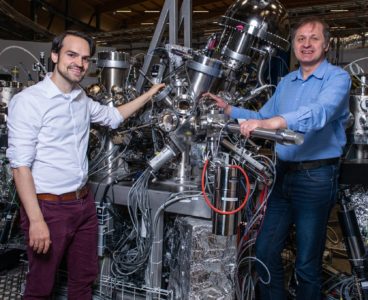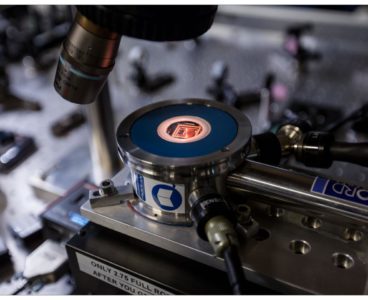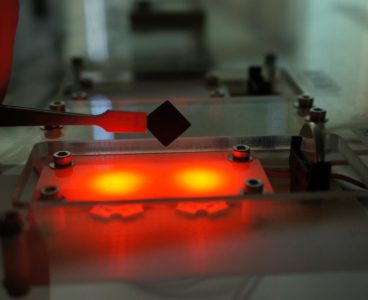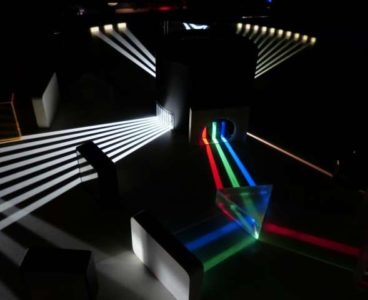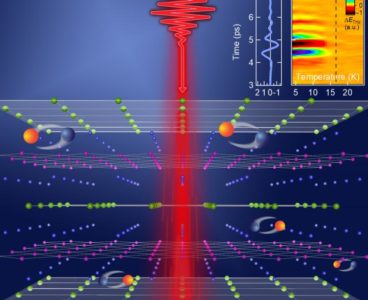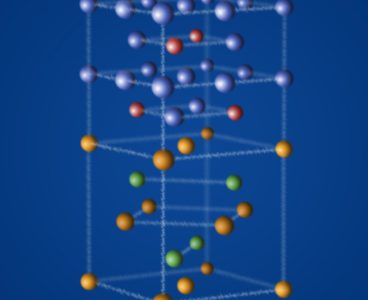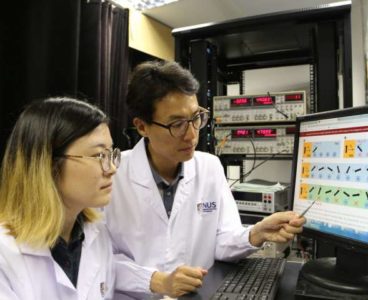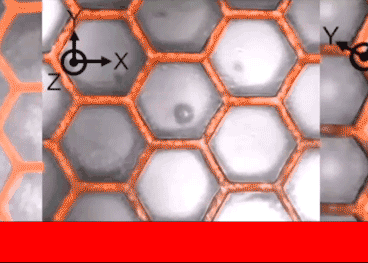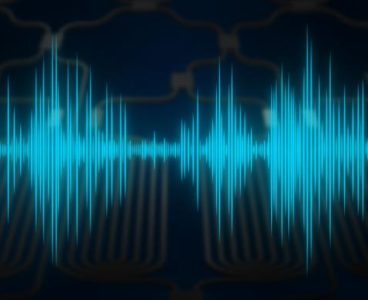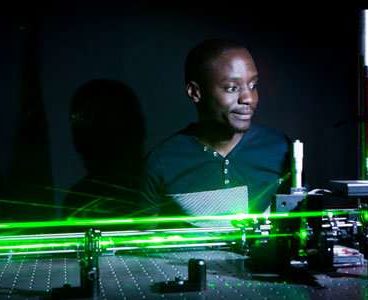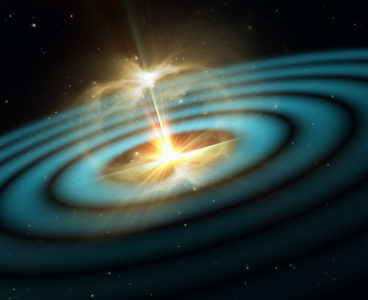
New Material Also Reveals New Quasiparticles
Researchers at PSI have investigated a novel crystalline material that exhibits electronic properties that have never been seen before. It is a crystal of aluminum and platinum atoms arranged in a special way. In the symmetrically repeating unit cells of this crystal, individual atoms were offset from each other in such a way that they—as…
Atomic Beams Shoot Straighter Via Cascading Silicon Peashooters
To a non-physicist, an “atomic beam collimator” may sound like a phaser firing mystical particles. That might not be the worst metaphor to introduce a technology that researchers have now miniaturized, making it more likely to someday land in handheld devices. Today, atomic beam collimators are mostly found in physics labs, where they shoot out…
Nanocomponent is a Quantum Leap For Danish Physicists
University of Copenhagen researchers have developed a nanocomponent that emits light particles carrying quantum information. Less than one-tenth the width of a human hair, the miniscule component makes it possible to scale up and could ultimately reach the capabilities required for a quantum computer or quantum internet. The research result puts Denmark at the head…
Manipulating the Crystallization and Assembly of Materials in Solution by Marangoni Flow
Solution-based approaches are widely used for crystal growth and material assembly. In the solution-based processes, inherent fluid flows always present. Recently, researchers at Peking University developed a general strategy for the regulation of crystal growth and material assembly by utilizing these fluid flows. They are able to control the mass transfer process during the growth…
New Materials for High-Voltage Supercapacitors
A research team led by Tohoku University in Japan has developed new materials for supercapacitors with higher voltage and better stability than other materials. Their research was recently published in the journal Energy and Environmental Science. Supercapacitors are rechargeable energy storage devices with a broad range of applications, from machinery to smart meters. They offer…
Glass Fibers and Light Offer New Control Over Atomic Fluorescence
Electrons inside an atom whip around the nucleus like satellites around the Earth, occupying orbits determined by quantum physics. Light can boost an electron to a different, more energetic orbit, but that high doesn’t last forever. At some point the excited electron will relax back to its original orbit, causing the atom to spontaneously emit…
Researchers Capture an Image of Negative Capacitance in Action
Researchers Discover New Evidence of Superconductivity at Near Room Temperature
Researchers at the George Washington University have taken a major step toward reaching one of the most sought-after goals in physics: room temperature superconductivity. Superconductivity is the lack of electrical resistance and is observed in many materials when they are cooled below a critical temperature. Until now, superconducting materials were thought to have to cool…
Scientists discover new ways to twist and shift light
The results from the National Physical Laboratory’s (NPL) latest research in photonics could open doors to new quantum technologies and telecoms systems Researchers from the National Physical Laboratory (NPL) have revealed unusual qualities in light that could lead the way to entirely new electronic devices and applications. Light is used extensively in electronics for telecommunications…
Physicists Uncover New Competing State of Matter in Superconducting Material
A team of experimentalists at the U.S. Department of Energy’s Ames Laboratory and theoreticians at University of Alabama Birmingham discovered a remarkably long-lived new state of matter in an iron pnictide superconductor, which reveals a laser-induced formation of collective behaviors that compete with superconductivity. “Superconductivity is a strange state of matter, in which the pairing…
Scientists Design New Material to Harness Power of Light
When Heat Ceases to be a Mystery, Spintronics Becomes More Real
The development of spintronics depends on materials that guarantee control over the flow of magnetically polarized currents. However, it is hard to talk about control when the details of heat transport through the interfaces between materials are unknown. This “thermal” gap in our material knowledge has just been filled thanks to the Polish-German team of…
Physicists Edge Closer to Controlling Chemical Reactions
A team of researchers from the Moscow Institute of Physics and Technology, and Aarhus University in Denmark has developed an algorithm for predicting the effect of an external electromagnetic field on the state of complex molecules. The algorithm, which is based on a theory developed earlier by the same team, predicts tunneling ionization rates of…
Engineers Invent Groundbreaking Spin-Based Memory Device
A team of international researchers led by engineers from the National University of Singapore (NUS) have invented a new magnetic device to manipulate digital information 20 times more efficiently and with 10 times more stability than commercial spintronic digital memories. The novel spintronic memory device employs ferrimagnets and was developed in collaboration with researchers from…
Atoms Stand in for Electrons in System for Probing High-Temperature Superconductors
High-temperature superconductors have the potential to transform everything from electricity transmission and power generation to transportation. The materials, in which electron pairs travel without friction—meaning no energy is lost as they move—could dramatically improve the energy efficiency of electrical systems. Understanding how electrons move through these complex materials could ultimately help researchers design superconductors that…
Two-Dimensional Materials Skip the Energy Barrier by Growing One Row at a Time
A new collaborative study led by a research team at the Department of Energy’s Pacific Northwest National Laboratory, University of California, Los Angeles and the University of Washington could provide engineers new design rules for creating microelectronics, membranes and tissues, and open up better production methods for new materials. At the same time, the research,…
Student Engineers an Interaction Between Two Qubits Using Photons
In the world of quantum computing, interaction is everything. For computers to work at all, bits—the ones and zeros that make up digital information—must be able to interact and hand off data for processing. The same goes for the quantum bits, or qubits, that make up quantum computers. But that interaction creates a problem—in any…
Microscopic ‘Sunflowers’ for Better Solar Panels
The pads of geckos’ notoriously sticky feet are covered with setae—microscopic, hairlike structures whose chemical and physical composition and high flexibility allow the lizard to grip walls and ceilings with ease. Scientists have tried to replicate such dynamic microstructures in the lab with a variety of materials, including liquid crystal elastomers (LCEs), which are rubbery…
Revealing Hidden Information in Sound Waves
New Device Widens Light Beams by 400 Times
Researchers Map Light and Sound Wave Interactions in Optical Fibers
Optical fibers make the internet happen. They are fine threads of glass, as thin as a human hair, produced to transmit light. Optical fibers carry thousands of Giga bits of data per second across the world and back. The same fibers also guide ultrasound waves, somewhat similar to those used in medical imaging. These two…
Physicists Demonstrate a New Device For Manipulating and Moving Tiny Objects With Light
When you shine a beam of light on your hand, you don’t feel much, except for a little bit of heat generated by the beam. When you shine that same light into a world that is measured on the nano- or micro scale, the light becomes a powerful manipulating tool that you can use to…
Researchers Defy 19th Century Law of Physics in 21st Century Boost for Energy Efficiency
Research led by a University of Sussex scientist has turned a 156-year-old law of physics on its head in a development which could lead to more efficient recharging of batteries in cars and mobile phones. Dr Jordi Prat-Camps, a research fellow at the University of Sussex, has for the first time demonstrated that the coupling…
Bursting Bubbles Launch Bacteria From Water to Air
Wherever there’s water, there’s bound to be bubbles floating at the surface. From standing puddles, lakes, and streams, to swimming pools, hot tubs, public fountains, and toilets, bubbles are ubiquitous, indoors and out. A new MIT study shows how bubbles contaminated with bacteria can act as tiny microbial grenades, bursting and launching microorganisms, including potential…

